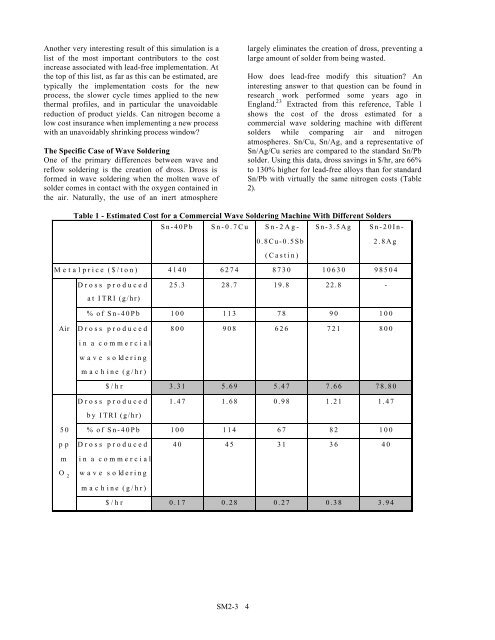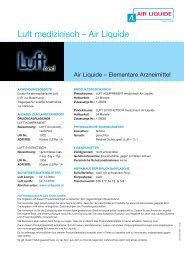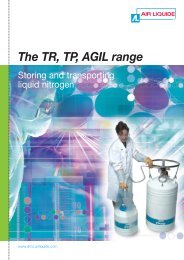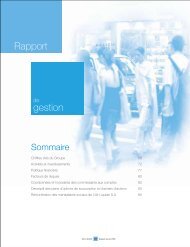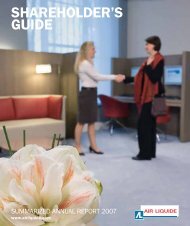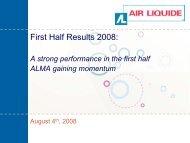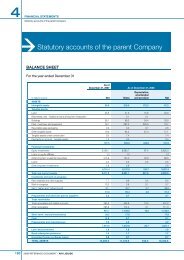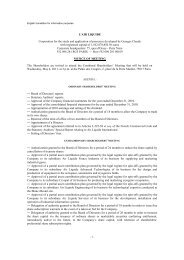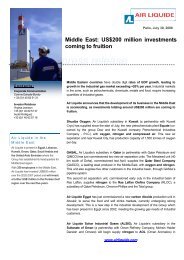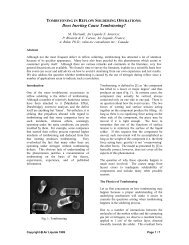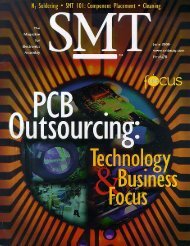Inert Soldering With Lead-Free Alloys: Review and Evaluation
Inert Soldering With Lead-Free Alloys: Review and Evaluation
Inert Soldering With Lead-Free Alloys: Review and Evaluation
You also want an ePaper? Increase the reach of your titles
YUMPU automatically turns print PDFs into web optimized ePapers that Google loves.
Another very interesting result of this simulation is a<br />
list of the most important contributors to the cost<br />
increase associated with lead-free implementation. At<br />
the top of this list, as far as this can be estimated, are<br />
typically the implementation costs for the new<br />
process, the slower cycle times applied to the new<br />
thermal profiles, <strong>and</strong> in particular the unavoidable<br />
reduction of product yields. Can nitrogen become a<br />
low cost insurance when implementing a new process<br />
with an unavoidably shrinking process window?<br />
The Specific Case of Wave <strong>Soldering</strong><br />
One of the primary differences between wave <strong>and</strong><br />
reflow soldering is the creation of dross. Dross is<br />
formed in wave soldering when the molten wave of<br />
solder comes in contact with the oxygen contained in<br />
the air. Naturally, the use of an inert atmosphere<br />
SM2-3 4<br />
largely eliminates the creation of dross, preventing a<br />
large amount of solder from being wasted.<br />
How does lead-free modify this situation? An<br />
interesting answer to that question can be found in<br />
research work performed some years ago in<br />
Engl<strong>and</strong>. 23 Extracted from this reference, Table 1<br />
shows the cost of the dross estimated for a<br />
commercial wave soldering machine with different<br />
solders while comparing air <strong>and</strong> nitrogen<br />
atmospheres. Sn/Cu, Sn/Ag, <strong>and</strong> a representative of<br />
Sn/Ag/Cu series are compared to the st<strong>and</strong>ard Sn/Pb<br />
solder. Using this data, dross savings in $/hr, are 66%<br />
to 130% higher for lead-free alloys than for st<strong>and</strong>ard<br />
Sn/Pb with virtually the same nitrogen costs (Table<br />
2).<br />
Table 1 - Estimated Cost for a Commercial Wave <strong>Soldering</strong> Machine <strong>With</strong> Different Solders<br />
Sn-40Pb Sn-0.7Cu Sn-2Ag- Sn-3.5Ag Sn-20In-<br />
0.8Cu-0.5Sb 2.8Ag<br />
(Castin)<br />
Metal price ($/ton) 4140 6274 8730 10630 98504<br />
Dross produced 25.3 28.7 19.8 22.8 -<br />
at ITRI (g/hr)<br />
% of Sn-40Pb 100 113 78 90 100<br />
Air Dross produced 800 908 626 721 800<br />
in a commercial<br />
wave soldering<br />
machine (g/hr)<br />
$/hr 3.31 5.69 5.47 7.66 78.80<br />
Dross produced 1.47 1.68 0.98 1.21 1.47<br />
by ITRI (g/hr)<br />
50 % of Sn-40Pb 100 114 67 82 100<br />
pp Dross produced 40 45 31 36 40<br />
m in a commercial<br />
O 2<br />
wave soldering<br />
machine (g/hr)<br />
$/hr 0.17 0.28 0.27 0.38 3.94


